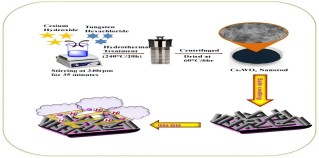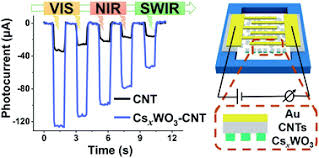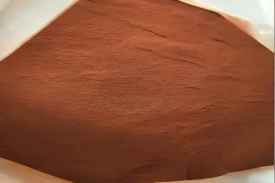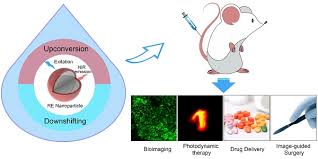UrbanMines Tech., Ltd. specializes in the research, production, and supply of high-purity compounds of tungsten and cesium. Many domestic and foreign customers cannot clearly distinguish between the three products of cesium tungsten bronze, cesium tungsten oxide, and cesium tungstate. In order to answer the questions of our customers, our company's technical research and development department compiled this article and explained it thoroughly. Cesium tungsten bronze, cesium tungsten oxide, and cesium tungstate are three different compounds of tungsten and cesium, and they have their own characteristics in chemical properties, structure, and application fields. The following are their detailed differences:
1. Cesium Tungsten Bronze Cas No.189619-69-0
Chemical formula: Usually CsₓWO₃, where x represents the stoichiometric amount of cesium (usually less than 1).
Chemical properties :
Cesium tungsten bronze is a type of compound with chemical properties similar to that of metallic bronze, mainly a metal oxide complex formed by tungsten oxide and cesium.
Cesium tungsten bronze has strong electrical conductivity and electrochemical properties of certain metal oxides and generally has good stability to heat and chemical reactions.
It has certain semiconductor or metallic conductivity and can exhibit certain electromagnetic properties.
Application areas :
Catalyst: As a functional oxide, it has important applications in certain catalytic reactions, especially in organic synthesis and environmental catalysis.
Electrical and electronic materials: The conductivity of cesium tungsten bronze makes it used in electronic components and optoelectronic devices, such as photovoltaic devices and batteries.
Materials Science: Due to its special structure, cesium tungsten bronze may be used to study the electrical conductivity and magnetic properties of materials.
2. Cesium Tungstate Oxide CAS Number. 52350-17-1
Chemical formula: Cs₂WO₆ or other similar forms depending on oxidation state and structure.
Chemical properties :
Cesium tungsten oxide is a compound of tungsten oxide combined with cesium, usually in a high oxidation state (+6).
It is an inorganic compound, showing good stability and high-temperature resistance.
Cesium tungsten oxide has a high density and strong radiation absorption ability, which can effectively shield X-rays and other types of radiation.
Application areas :
Radiation protection: Cesium tungsten oxide is widely used in X-ray equipment and radiation protection materials due to its high density and good radiation absorption properties. It is commonly found in medical imaging and industrial radiation equipment.
Electronics Industry: Cesium tungsten oxide may also be used to make specific radiation shielding materials in high-energy physics experiments and electronic equipment.
Catalysts: It also has potential applications in certain catalytic reactions, especially under high temperatures and strong radiation conditions.
1.Cesium Tungstate CAS Number 13587-19-4
Chemical formula: Cs₂WO₄
Chemical properties :
· Cesium tungstate is a type of tungstate, with tungsten in the oxidation state of +6. It is a salt of cesium and tungstate (WO₄²⁻), usually in the form of white crystals.
· It has good solubility and dissolves in an acidic solution.
Cesium tungstate is an inorganic salt that generally exhibits good chemical stability, but may be less thermally stable than other forms of tungsten compounds.
Application areas :
Optical materials: Cesium tungsten is often used in the manufacture of certain special optical glasses due to its good optical properties.
· Catalyst: As a catalyst, it may have applications in certain chemical reactions (especially at high temperatures and acidic conditions).
- Tech field: Cesium tungstate is also used in the production of some high-end electronic materials, sensors, and other fine chemical products.
Summary and comparison:
| Compound | Chemical formula | Chemical properties and structure | Main application areas |
| Cesium Tungsten Bronze | CsₓWO₃ | Metal oxide-like, good conductivity, electrochemical properties | Catalysts, electronic materials, optoelectronic devices, high-tech materials |
| Cesium Tungsten Oxide | Cs₂WO₆ | High density, excellent radiation absorption performance | Radiation protection ( X- ray shielding), electronic equipment, catalysts |
| Cesium Tungstate | Cs₂WO₄ | Good chemical stability and good solubility | Optical materials, catalysts, high-tech applications |
Main differences:
1.
Chemical properties and structure :
2.
·Cesium tungsten bronze is a metal oxide formed by tungsten oxide and cesium, which exhibit the electrochemical properties of metal or semiconductors.
·Cesium tungsten oxide is a combination of tungsten oxide and cesium, mainly used in high-density and radiation absorption fields.
· Cesium tungstate is a combination of tungstate and cesium ions. It is usually used as an inorganic salt and has applications in catalysis and optics.
3.
Application areas :
4.
· Cesium Tungsten Bronze focuses on electronics, catalysis, and materials science.
· Cesium tungsten oxide is mainly used in radiation protection and certain high-tech equipment.
· Cesium tungstate is widely used in the fields of optical materials and catalysts.
Therefore, although these three compounds all contain the elements cesium and tungsten, they have significant differences in chemical structure, properties, and application areas.













